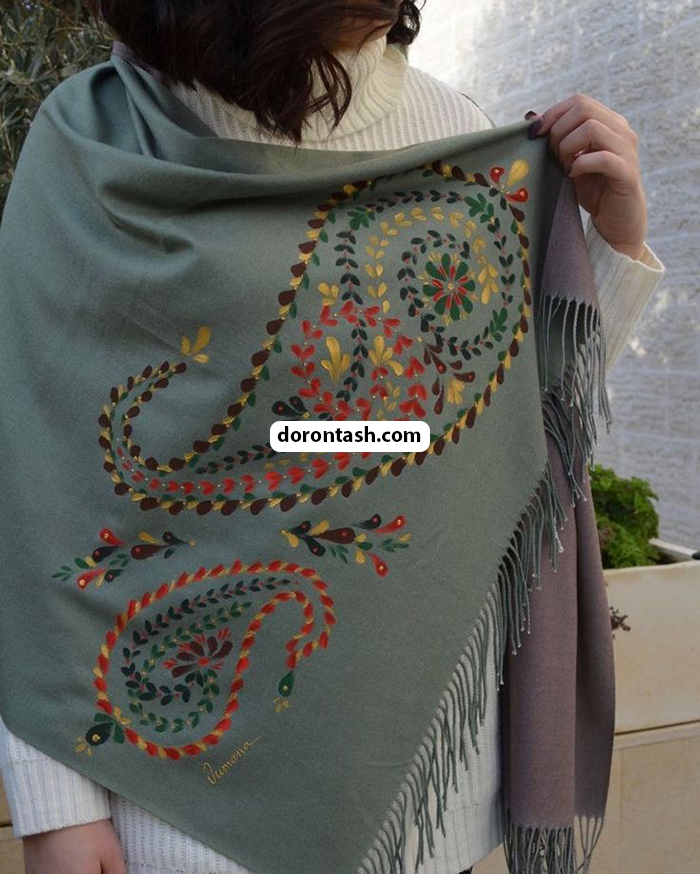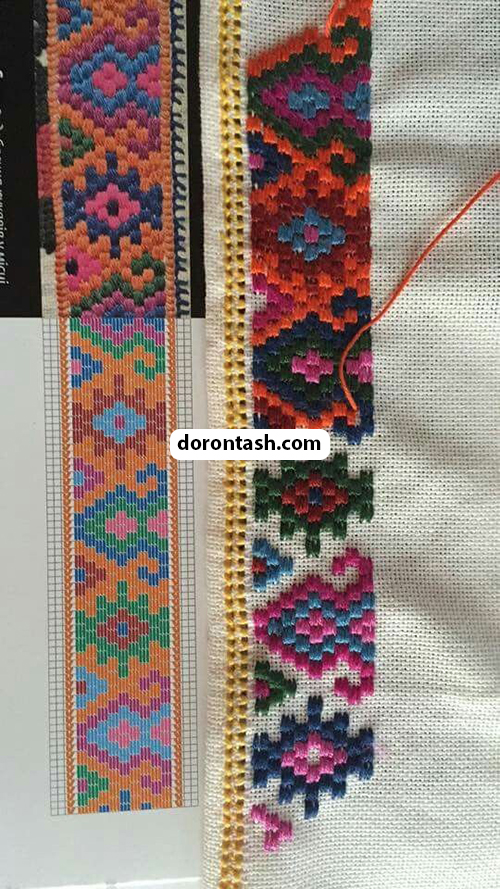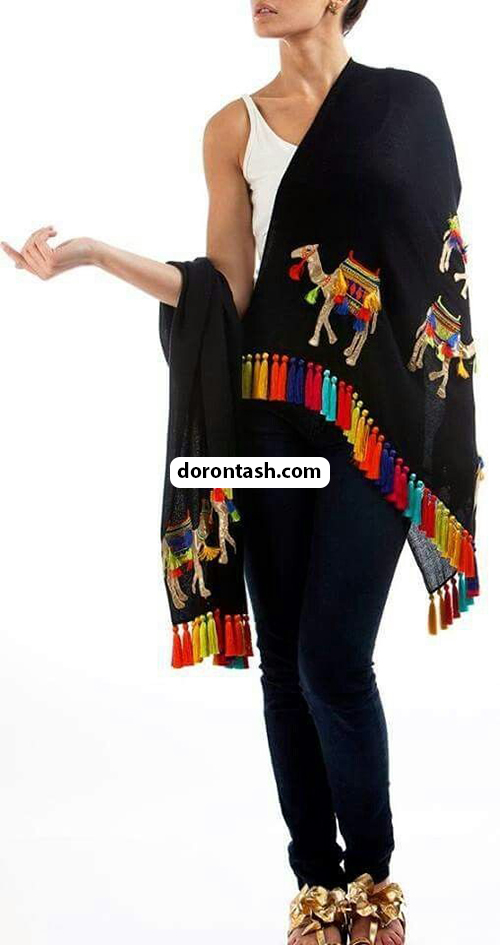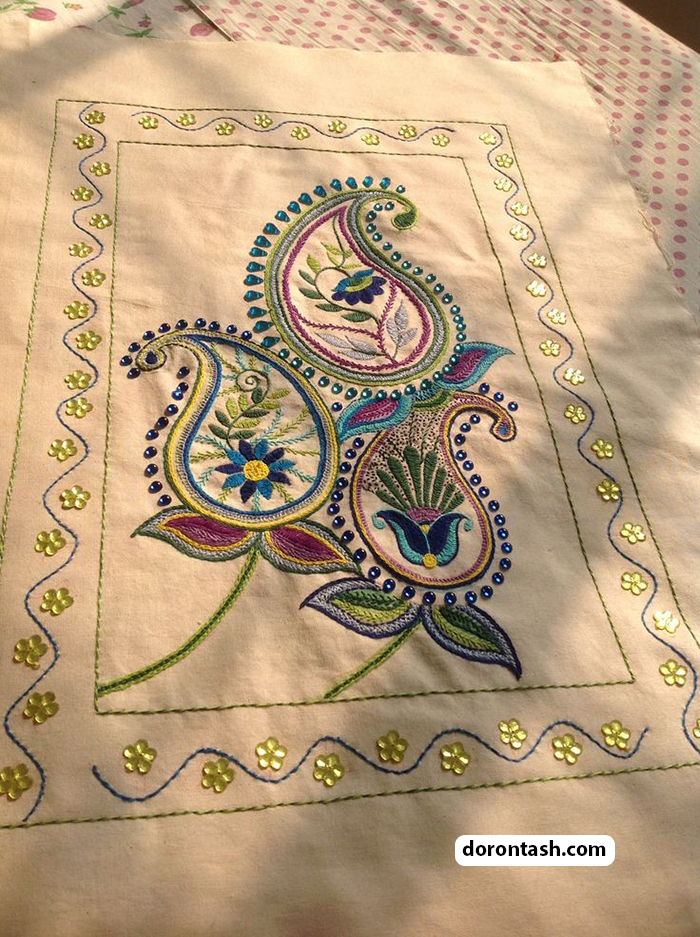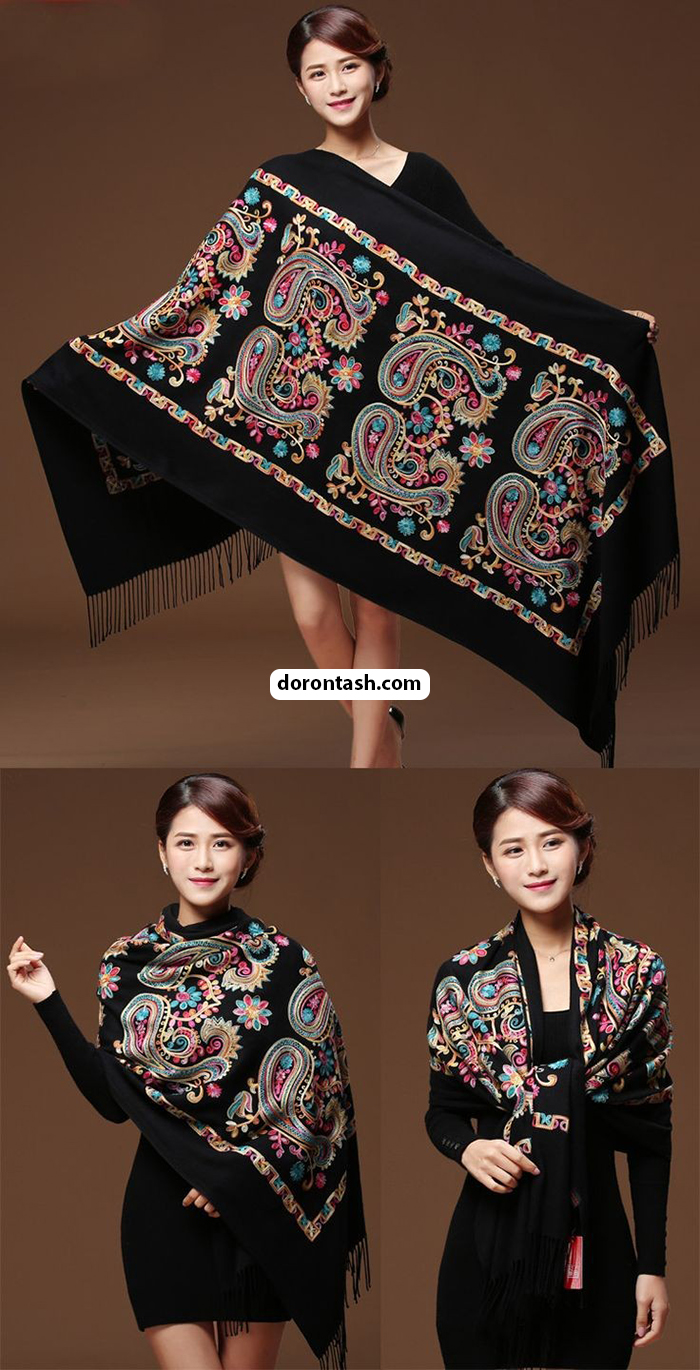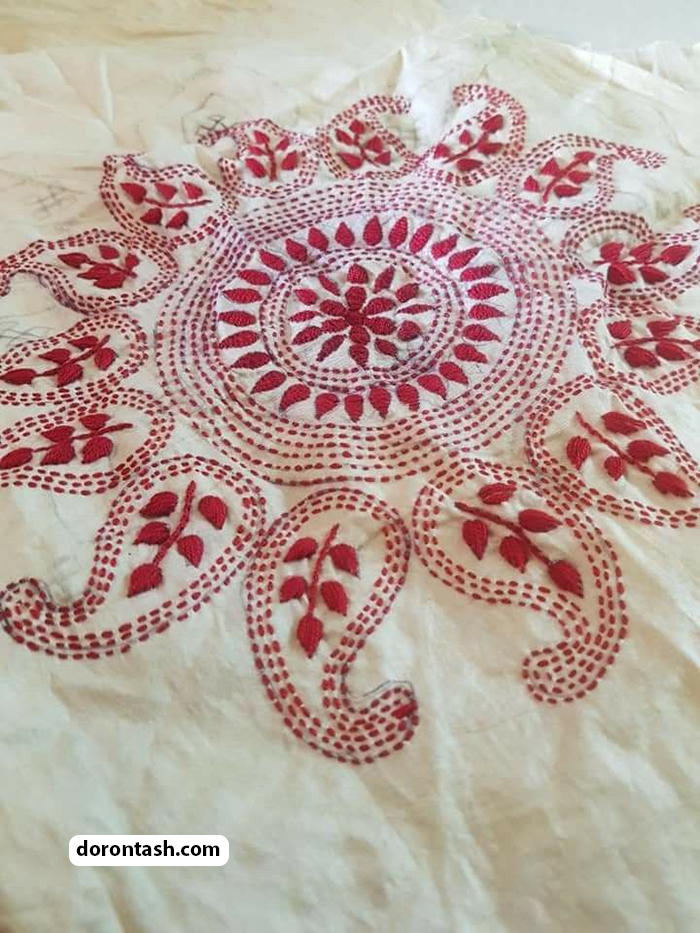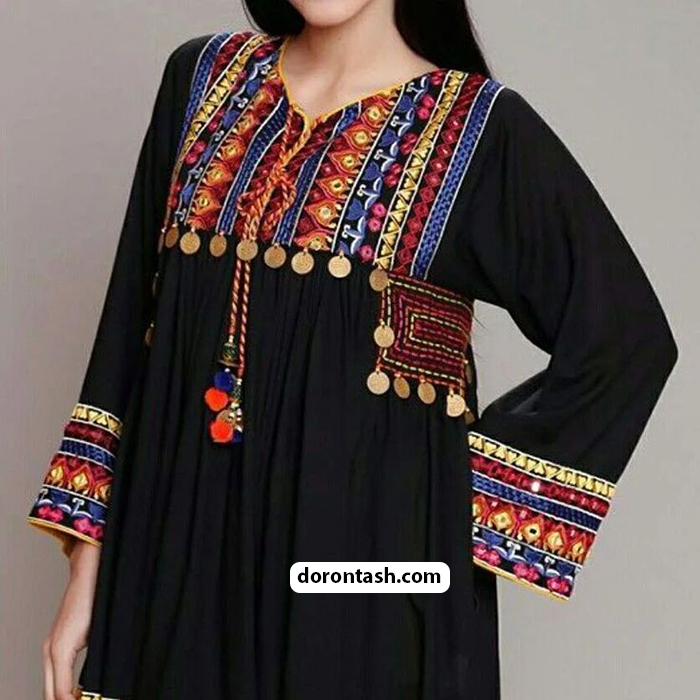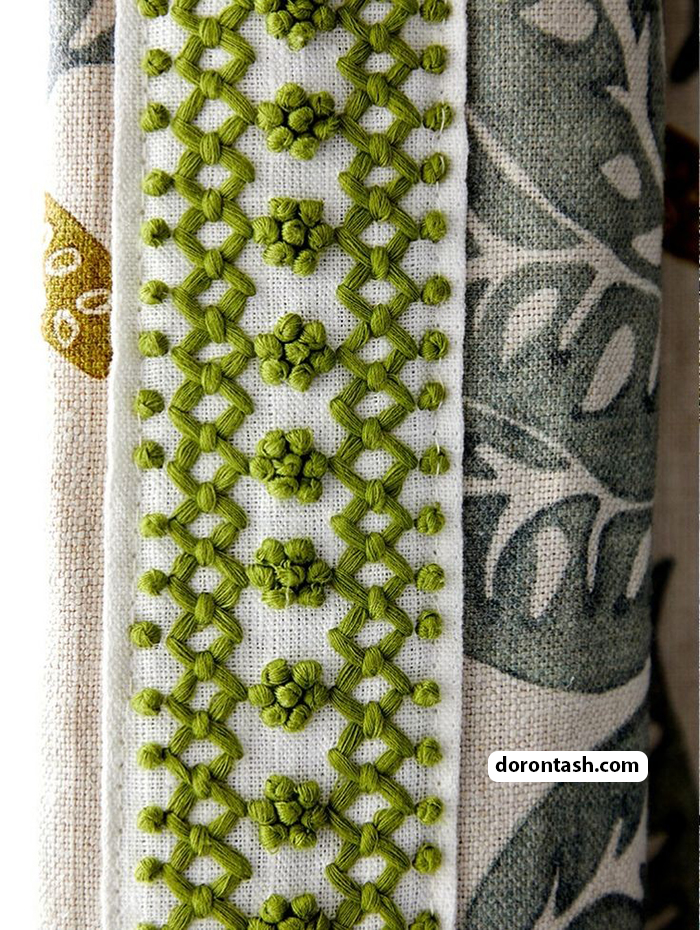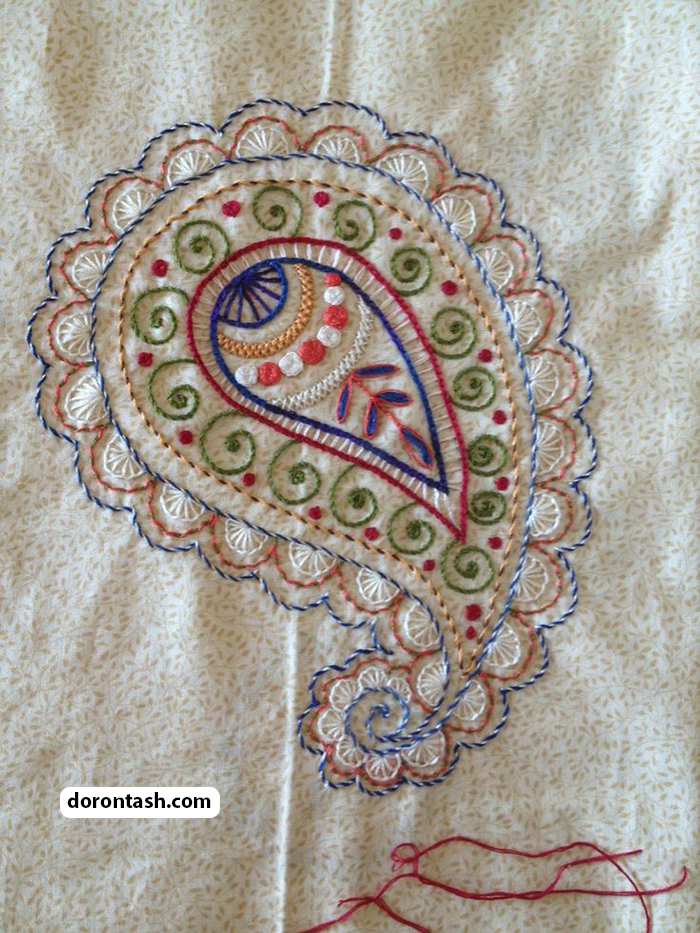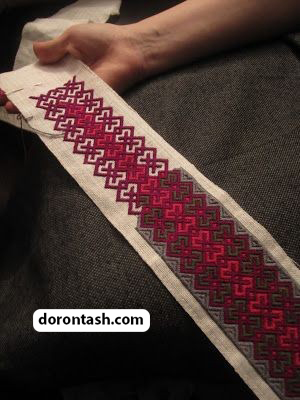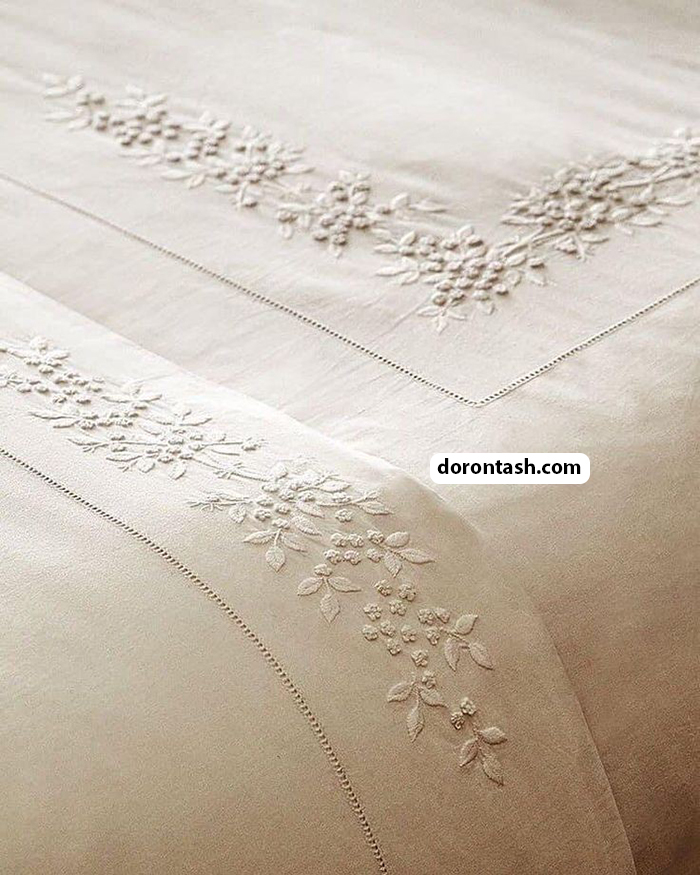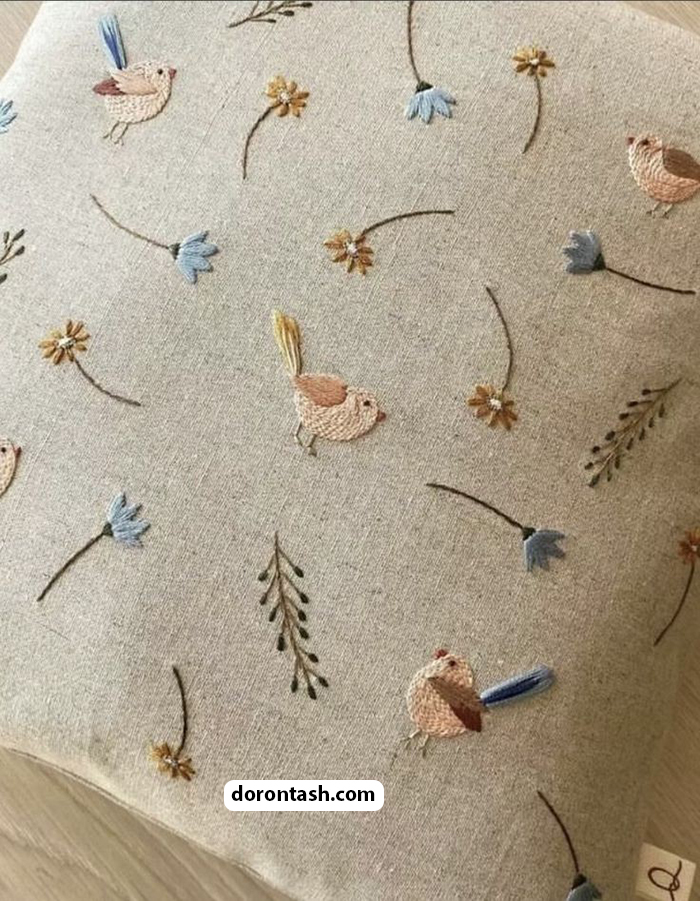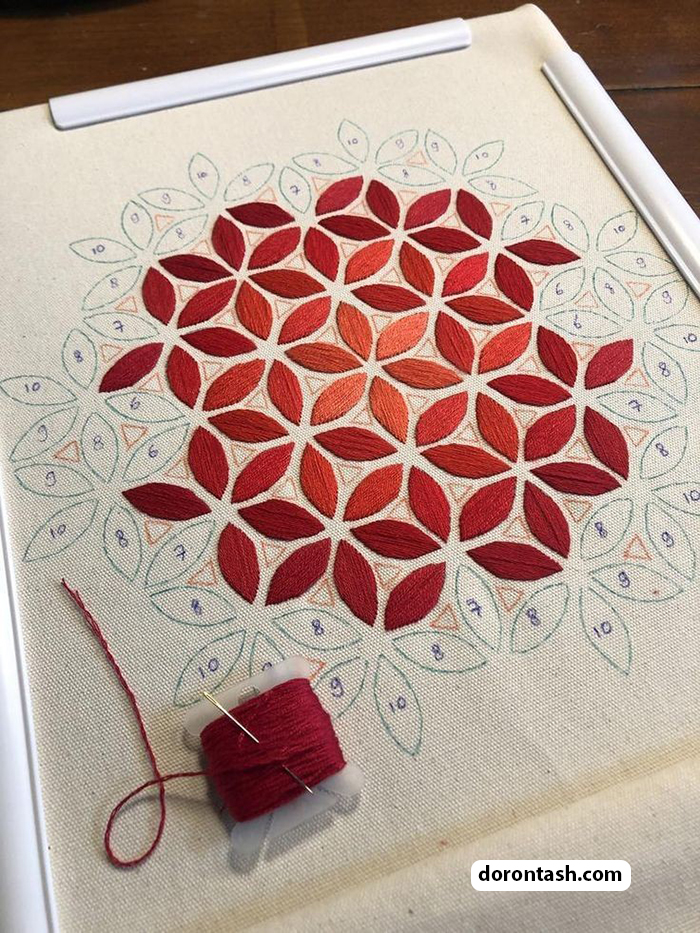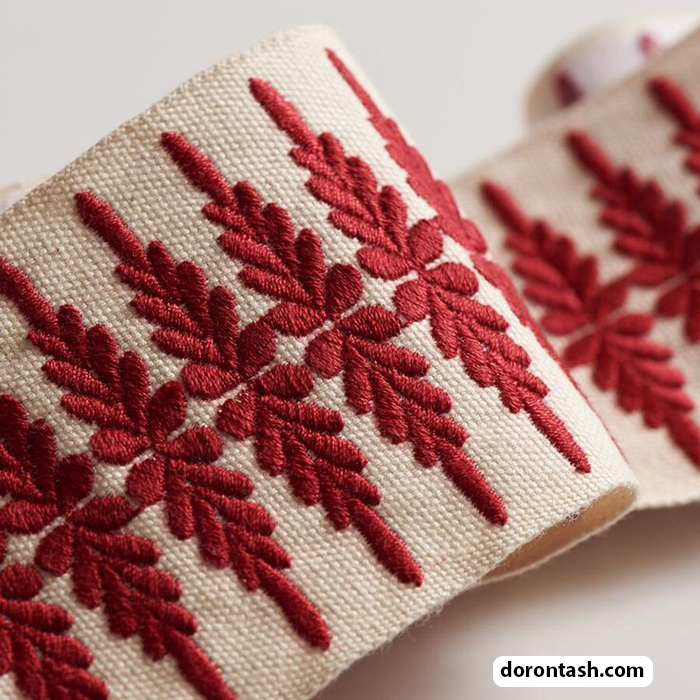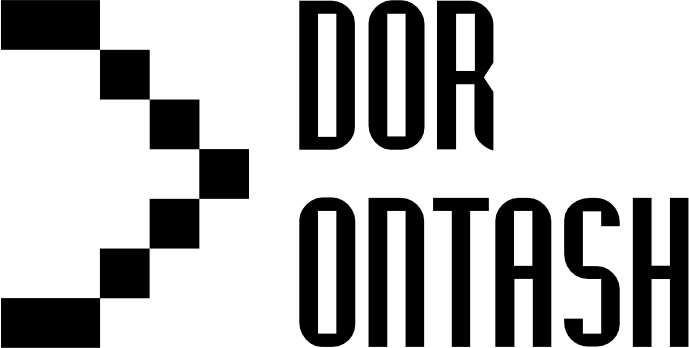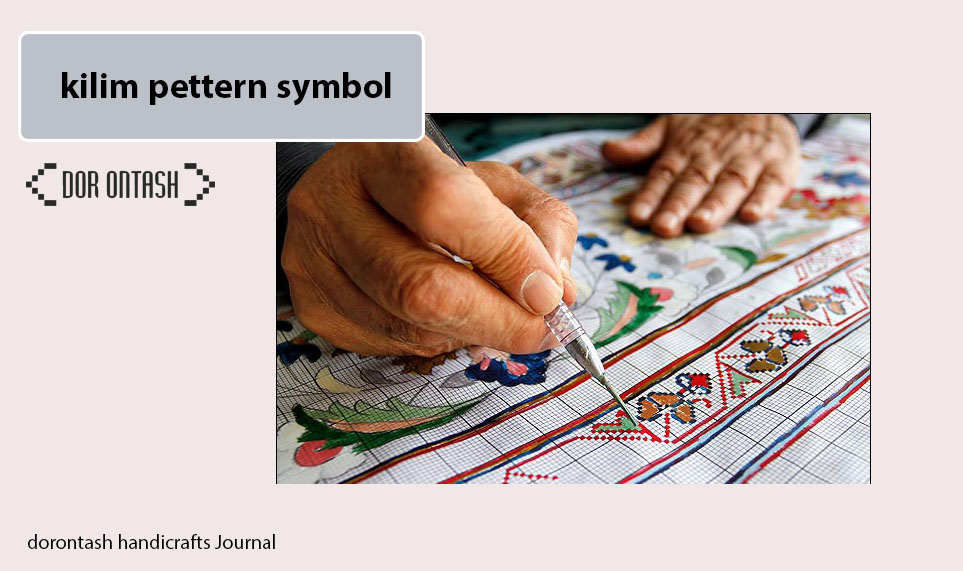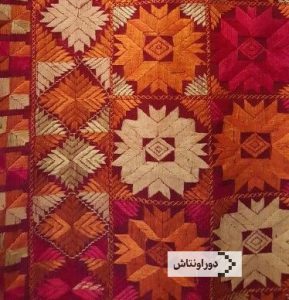 Pate dozi is an authentic Iranian art whose other names are fatha dozi and selese dozi. The base fabric of the pete is a thick and woolen fabric called broad.
Pate dozi is an authentic Iranian art whose other names are fatha dozi and selese dozi. The base fabric of the pete is a thick and woolen fabric called broad.
In the culture and tradition of our families, from ancient times until now, sewing has always been a part of life. Stitches that with great delicacy and precision gave freshness and freshness to lifeless threads and fabrics and made the atmosphere of the house beautiful and attractive. Among the various stitches and stitches that exist in our art and culture, patchwork is one of the attractive ways to show the artistry of the people of our country.
This beautiful, original and long-lasting art is also known by the names of Fata Dozi and Seles Dozi , and some call it by this name. In any case, its common name is Pateh Dozu, which is more useful.
videos of embroidery
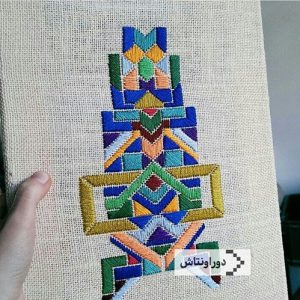 Patchwork artists, who are usually women and housewives, use a needle to sew mental images that are a combination of their personal thoughts and visions with colored cotton stitches on the background of thick woolen cloth.
Patchwork artists, who are usually women and housewives, use a needle to sew mental images that are a combination of their personal thoughts and visions with colored cotton stitches on the background of thick woolen cloth.
Dorontash’s suggestion: iranian handicrafts
History of embroidery
This beautiful and old art is one of the most enduring methods of sewing and embroidery in our country, whose origin goes back to Kerman . Of course, embroidery is still common in Kerman, Zarand, Rafsanjan and Sirjan, and the artistic people of these areas are still engaged in sewing.
The exact and specific date of the creation of this beautiful and lasting art is not available, but in various books, the oldest example of an embroidered patch is mentioned in the year 1285 AH. Also, in the tomb of Nematullah Shah Wali, an example of embroidery was found, which was used to cover his tomb. It is said that this work was sewn in 1294 and they spent three years to prepare it.
Basic materials and sewing tools for embroidery
For embroidering, wide, embroidering thread or thread, needle, carbon or stencil, thimble and scissors are needed.
Farat Farat is a kind of thick and woolen fabric , which is most used in the art of embroidery, as an undercloth.
In the past, wide weaving was common and this fabric was used to sew clothes such as coats, jackets and skirts. Today, the use of beret for these purposes is obsolete and its raw materials are not available.
In the past, wide was produced by wooden weaving machines, but with the passage of time, these machines have given their place to electric machines.
Today, the pates of Kerman province are sewn on factory fabrics. Wide is usually in camel, green, red, dark brown and green colors.
Production steps of an embroidered piece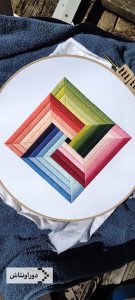
Pate is a clear example of the patience of Kerman people. Between 70 and 100 needles are used for each square centimeter . To produce pate, they first cut the width in desired dimensions and then design the desired design on it.
Usually, sellers have raw materials, cut and designed, ready to be embroidered. To design, first draw the desired design on paper, then pierce the designed lines with a needle. At this stage, the design is placed on the wide surface and plaster soil or charcoal dust is poured on it. They use chalk dust for dark fabrics and charcoal dust for light fabrics. Of course, today they use carbon fiber or stencil for this. Marked points are marked with a pen on a wide cloth.
The next step is to choose the thread and color . 375 to 400 grams of yarn are needed for each meter of patte.
After choosing the thread and preparing it, the stem embroidery is done. At this stage, the seamstress sews the drawn lines on the wide side. After the embroidery line, the inside of the pattern is filled with a special style of needlework, using a square tick stitch. This stitch is called square mallet or quadrangular mallet. This stitch should be sewn so delicately that there is only a distance of one thread between each mallet. The finer and finer this stitch is, and the more it is like a bead, the more valuable it is.
The next step is embroidering or embroidering text . At this stage, long silks or five-petal flowers are sewn and the background is filled.
The last step is leaf embroidery. This type of sewing has a zigzag pattern and is mostly done on the edges of flowers, around bergamots and collars. There are short and long diagonal stitches in the embroidered leaf. Leaf embroidery is the most important, the most difficult and the most delicate part of the work, and it makes the pate twice as beautiful.
Finally, after the sewing is finished, due to the pulling and tightening of the threads, the pate becomes wrinkled. To remove wrinkles, they wash and iron the pate. After washing, the pate is placed on a special wood called nord to dry. Of course, nowadays washing is done by iron washers.
At this time, the pate is ready for sale. Among the other common patterns of embroidery in Kerman are Miri, Jakkai, Badami, and Cashew patterns . Lakh Taranji, the role of animals and birds can also be seen in Pateh designs. Pate designs have 3 main parts apart from their role . Inscription, lamp and altar. Marginal designs are called inscriptions. The design in the middle is the sun or the sun, and the designs that are sewn around the sun are called mihrab.
The principles of coloring in embroidery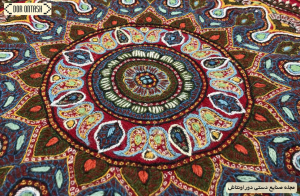
Dark colors were mostly used in original and old embroidery . Colors such as dark green, vermilion and black were seen more than other colors in patte dozi patterns. This darkness may be due to the hard life that the women of Pate Doz had in the past. Instead of talking about their pains and sufferings, they sewed them on cloth.
There are also many artists who use bright colors such as pomegranate red or turquoise blue in embroidery.
The combination of colors in embroidery has certain principles. If the (wide) shawl is white, blue, black, green, yellow, and red square hammers are used. In the red shawl, the four-cornered mallet is sewn in yellow, green and blue colors. In the green shawl, the mallets are white and green, and in the black shawl, the mallets are white and green.
The color of the leaves that are sewn into the pata should match and harmonize with other colors. In the white peta, the leaves are black, lacquered and green, and in the red peta, the leaves are white, yellow, blue, and green. The leaves are sewn in white, blue, yellow, black and lacquer colors in the green peta. White, yellow, blue and green colors are used to sew the leaves.
In embroidery, the principles of coloring are very important and must be followed. Nowadays, with the change of people’s taste, pates use more fancy colors.
The colors used in embroidery are chemically or naturally colored. Natural color is obtained from plants such as runas, spinach, pomegranate, walnut, and wasmeh . Of course, artificial coloring is done more nowadays.
The price of broads and yarns that are dyed with natural color is more than chemical types. Chemical colors have more shine than vegetable colors, but the fans of vegetable colors are more
Ways to preserve pate
Never spread this Kerman handicraft on the strap when it is wet because the pate will stretch. In order for insects not to damage the cake, it should be kept in a cool place with air circulation.
Washing the pâté will destroy it, so keep it away from dust as much as possible. It is not right to keep pateh in the storage room and luggage. If you want to put the pate in your luggage, it is better to put it in a cotton cloth and put a scented soap next to it. To preserve the color of the pâté, do not expose it to a lot of sunlight
Uses of embroidery
The use of embroidery in the life of the people of Kerman is very large and wide. This art can be considered an inseparable art from the culture of the people of that region.
These Kerman handicrafts are used for tablecloths, Quran covers, curtains, cushions, coasters, panels, sweets and chocolate bars , etc. Pate Dozi Janmaz is usually rectangular in shape and has the role of an altar. The embroidered table is used as Haft Sin table, wedding table and mourning table. The wedding and Haftsin tables are green and the mourning table is black.
Another use of embroidery is its use in ornaments.
Embroidery tool
Pate embroidery, as one of the sub-branches of traditional embroidery in our country, Iran, is mostly the result of the efforts and hard work of the women of this ancient land, who produced precious and valuable works with minimal facilities. With the help of natural elements and materials in their living area, they created works that even after many years, the people of the world are surprised to see them and they value so much beauty.
This old and original art was produced by Kermani women with great effort on woolen fabrics. With the help of colorful and beautiful threads, they showed their taste and talent on thick and lifeless fabrics and created beautiful and attractive works from them. To produce this work, they also needed materials and tools.
Tools needed for embroidery
In order for an embroidery work to be produced as beautifully as possible, it needs tools and elements to be available to the artists to work with. These requirements are divided into tools and elements, which we will examine together in the following.
Cloth
The fabric that is used in the production of embroidery is called wide , which is very thick. In ancient times, this fabric was prepared using traditional and simple machines such as two-foot looms and four-foot looms. This fabric is produced in six different colors: red, cream (milky), orange, black, navy and green, but red and cream are more popular and common. So that many people know Pateh Dozi fabric only with these two colors.
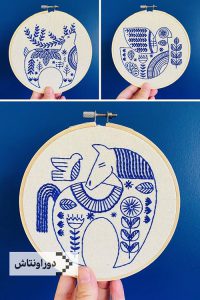 thimble
thimble
In order for the speed of the work to be high while embroidering and the quality of the work to be good and accurate during the high speed, a tool like a thimble is needed to do this work more professionally and accurately. This tool is produced with different materials such as metal, plastic, wood and leather.
This tool should be made in such a way that it does not put pressure on the finger and it is easy to work with it. Also, the color of the metal material is the best type, which is much more suitable for work than other thimbles.
scissor
Another tool that is essential for embroidery is scissors, which are available in different types and are used. Zigzag scissors and cutting scissors , as well as embroidery scissors, are used by artists in embroidery work. Embroidery scissors are available in small and large size, and its flat head shape is used for embroidery.
thread
The threads that are used for sewing and embroidering on the pate cloth are called ras . This type of thread has a kind of wool that is spun. If you intend to buy embroidery products, to ensure the quality of the thread, you can pay attention to the following points:
- When you wash the cotton thread, it should not give off its color.
- When you hold a piece of cotton thread and pull it from both sides, it should not cut easily. If it falls apart early, it is known that it is not of good quality.
- Another point that you should know about the thread is that this thread should be smooth and uniform. So make sure that the curly thread is not of good quality.
The right needle
As you know, applique embroidery is one of the branches of embroidery and it needs special needles. The needle required for embroidering is called chenail , which has a large spring, medium length and a sharp point. Because the thread is woolen and very thick, the needle of this profession must be wide so that the thread can easily pass through it.
There are methods for threading a needle, which is usually a difficult task. You can use a threading needle or put the thread between a sheet of thin paper and pass the two ends of the paper through the hole and pull the paper. Because the thread is wool, it has fluff, so you can bend its head so that it fits more easily into the needle hole.
How to sew patte embroidery
Artists who have the ability to sew and embroider in the style of patchwork, usually display their attitude, vision and view of the universe in the form of beautiful and creative designs and maps. At the beginning of the work, the artists check the dimensions they want and prepare the size of the fabric they need. After that, in order to implement their design on the fabric, they use a drawing on a paper called Calc . After that, they match the plan on the wide fabric and draw the initial design by sewing.
After the design is complete, the appropriate colors should be considered for it. More original designs need dark colors. Although, recently, bright colors have opened up space among the designs of embroidery.
In the stem embroidery stage, the embroiderer stitches the place of the main lines that he had already marked and then fills the empty spaces. This stage is known as water embroidery and text embroidery . Leaf embroidery and shadowing are among the last stages of this profession.
Types of sewing in embroidery
We briefly describe the types of sewing used in this profession:
- Stem embroidery
- Simple waterfall
- Wide stem embroidery
- single chain
- Three chains
- Zigzag stitch
- embroidery
- Simple embroidery
- mouse tooth
- Bukhara sewing
- satin embroidery
- Square mallet
- Four-pronged mallet
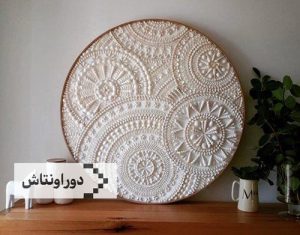 Patterns used in embroidery
Patterns used in embroidery
Beautiful and original patterns are used in patte embroidery, which is the result of precision and elegance of artists. These roles can be influenced by the thoughts, vision and beliefs of the artist. Also, original and lasting Iranian designs are used in them. The main designs in patte embroidery are lach tarang and betejakeh .
Application of embroidery
This original and beautiful product, apart from the decorative aspect, is also used and can be used for different parts. For example, he used this beautiful and unique embroidery as a tablecloth, janmaz, curtain, Quran cover, bedspread, matka, decorative panel, cushion and other items.
the photos of art of embroidery
